The Question Well tool


Hello! We’re Jennifer Shepherd and Sam Bradd. We’re visual practitioners, educators and facilitators. We live across the country from each other in Canada, and have collaborated on a range of writing projects about visual practice in the last few years. This tool below is an excerpt from a chapter you’ll find in our co-edited anthology Drawn Together Through Visual Practice, published in 2016.
We hope you’ll put it in your visual practice kit and pull it out many times as you choose to reflect in mini moments that transform how well you draw.
— PDF Download – Drawn Together Through Visual Practice Chapter —-
We’re both committed to reflection as an integral part of our visual practice. As we make time to reflect, our active curiosity calls us to explore:
What more can we know about ourselves?
What new possibilities for action do we see?
How can we share what we’ve learned with others?
We’d love to learn from you, too.
How ready are you to draw?
How does the way you show up impact the quality and sensitivity of the drawings you make?
Picture it: there’s a clean slate of white space in front of you. You’ve got your markers or tablet all juiced up and the meeting is about to begin. You take a breath, look around, and ask: where am I in this picture?
Wherever you find yourself, we invite you to ask a second question,
What deep and careful reflection could I choose now to listen and draw at my best?
This small moment to pause has the potential to make a big difference – in our creativity, in our relationship with our clients and participants, and how we expand the field of visual practice.
We believe that taking mini moments to pause and reflect can transform how we draw and radically improve the value of what we do as visual practitioners.
And that is the premise of this Question Well tool. When we reflect in the moment, or on a moment from the past, we extend our awareness and care and create openings to expand our competence. This is true regardless of whether we hold a ready pen, offer input or bear witness to another’s creatives process or interpret a completed work.
We invite you – our colleagues, clients, and facilitation partners – to notice areas for reflection in your own practice, wherever that might be. When you’re ready to take a mini moment, dive with and us into this rich well of questions and see what emerges!
What you’ll find in the Question Well tool:
- We introduce a new model for reflection that is unique to graphic facilitation and visual practitioners. What other models come to mind?
- We share the Question Well with 64 questions and 9 areas of focus. What new questions would you add?
- We intersperse anecdotes from our story as practitioners into the Question Well, and invite you to think about your story.
- We suggest ways to use the questions.
Let’s jump in.
Introducing a New Model for Reflection
There are many dynamics and relationships that are worthy of reflection during visual facilitation. Here’s a diagram that illustrates what we mean.
In this mini book, you’ll see questions in the Question Well organized into 9 areas of focus – one for each of the connections shown in the diagram.
We have crafted 64 questions to support your reflection. We’ve organize them in 9 areas of focus to help you navigate your way through the Question Well.



















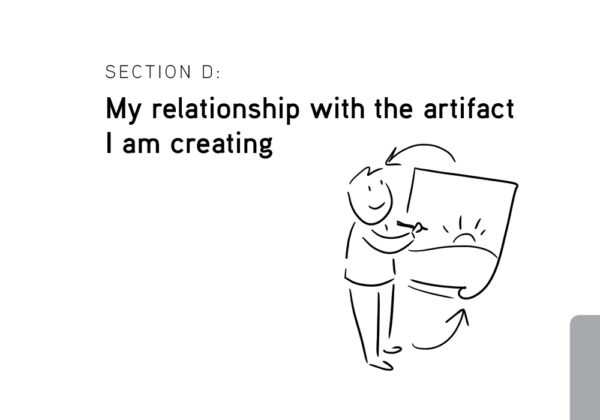





























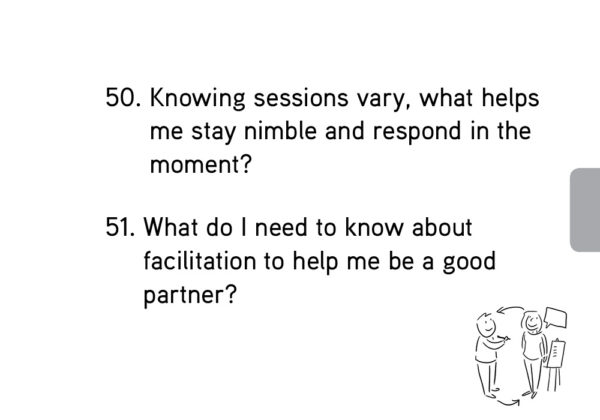










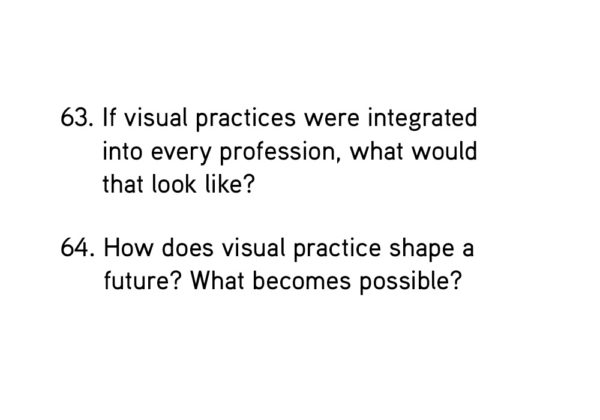
 We offer these questions for how to use this chapter as a kind of personal workbook:
We offer these questions for how to use this chapter as a kind of personal workbook:
- Reflect on your own, or gather with peers, clients, and others
- Read the questions aloud, pause, and notice what answers arise
- Phone a colleague and have a conversation
- Write a journal entry and see what emerges
- Bring your thoughts forward to the field of visual practice online or at a conference
We offer these methods as wisdom from our shared experience as a gift to the visual practice field. We’ve tried them all, and they work! These are only a start. Now, it’s your turn. We invite you to share your own questions on the Drawn Together Through Visual Practice website, too.
 About the Authors
About the Authors
Jennifer Shepherd inspires well-intentioned and overwhelmed leaders to gain the clarity they need to create insightful connections and make their next move. She has oodles of facilitation and collaborative change experience working with local communities, regional networks and national networks from housing to hockey. She is known for asking questions that prompt us to ask more questions, draw together, and solve the complex puzzles of our time. Jennifer is an IAF Certified Professional Facilitator who loves to drum and walk the world in wonder. Contact her at http://www.livingtapestries.ca
Sam Bradd is a graphic facilitator and specialist in information design. He uses visuals for people that want to engage, solve problems, and lead. Together, we’re Drawing Change. In the last 15 years, Sam has collaborated with the World Health Organization, Google, Indigenous organizations, and researchers on four continents. In 2016, his side project the award-winning Graphic History Collective published a book of comics because how we tell histories can change the world. He has a Masters in Educational Studies (University of British Columbia). Contact him at http://www.drawingchange.com.
Read more in Drawn Together Through Visual Practice
This Question Well tool is part of a larger book, Drawn Together Through Visual Practice. It is edited by Brandy Agerbeck, Kelvy Bird, Sam Bradd and Jennifer Shepherd and was published in 2016. This anthology demonstrates the power of visuals as a sensemaking device in an age of unprecedented complexity. It is available on Amazon.com in book and Kindle formats.




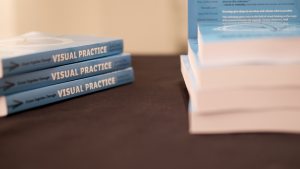


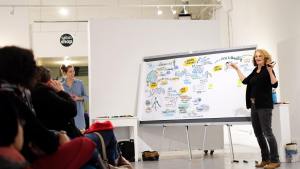

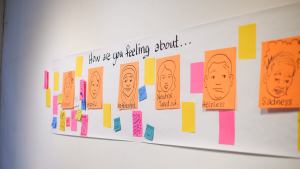

































 oment. Thank you.
oment. Thank you.